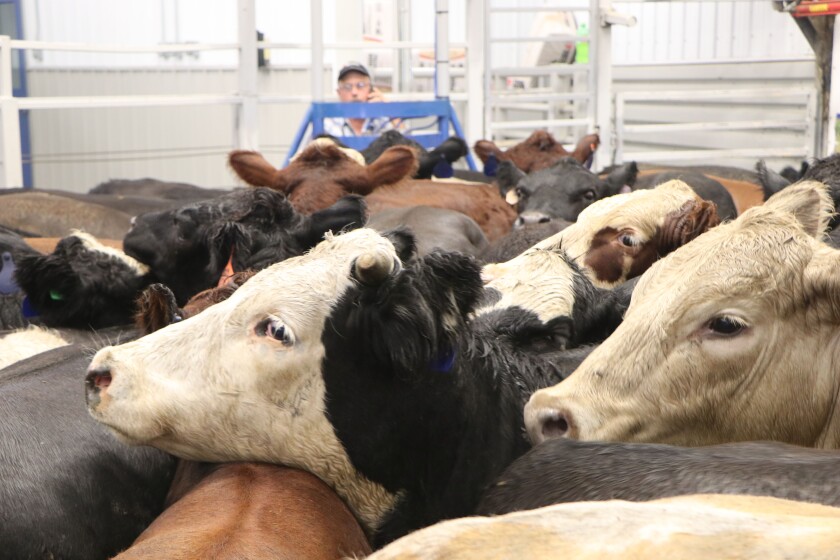Comprehending Livestock Risk Security (LRP) Insurance Coverage: A Comprehensive Guide
Navigating the realm of animals danger security (LRP) insurance policy can be a complicated venture for numerous in the farming industry. From exactly how LRP insurance policy functions to the various protection alternatives available, there is much to discover in this extensive guide that could possibly shape the way livestock manufacturers approach risk monitoring in their services.

How LRP Insurance Policy Works
Sometimes, recognizing the auto mechanics of Animals Danger Protection (LRP) insurance coverage can be complex, but breaking down just how it functions can provide quality for farmers and ranchers. LRP insurance coverage is a threat monitoring tool developed to safeguard livestock producers versus unanticipated rate declines. The plan permits manufacturers to set an insurance coverage level based upon their specific demands, picking the variety of head, weight array, and insurance coverage price. Once the policy remains in location, if market rates fall listed below the insurance coverage rate, manufacturers can file a case for the distinction. It is essential to keep in mind that LRP insurance policy is not an earnings assurance; instead, it focuses solely on price danger protection. The coverage duration typically varies from 13 to 52 weeks, offering flexibility for producers to pick a duration that aligns with their production cycle. By using LRP insurance coverage, farmers and ranchers can alleviate the monetary threats associated with fluctuating market value, ensuring better security in their procedures.
Qualification and Protection Options

When it comes to coverage choices, LRP insurance coverage provides producers the flexibility to choose the coverage degree, coverage period, and endorsements that best suit their threat administration requirements. By understanding the eligibility requirements and insurance coverage choices available, animals producers can make enlightened decisions to take care of danger efficiently.
Advantages And Disadvantages of LRP Insurance
When evaluating Livestock Threat Security (LRP) insurance coverage, it is vital for animals producers to evaluate the benefits and drawbacks intrinsic in this threat management device.

Among the key benefits of LRP insurance is its ability to provide defense versus a decrease in livestock rates. This can aid secure producers from financial losses resulting from market changes. In addition, LRP insurance provides a level of adaptability, enabling manufacturers to tailor insurance coverage levels and policy durations to suit their certain requirements. By locking in an ensured rate for their livestock, manufacturers can much better manage threat and prepare for the future.
One constraint of LRP insurance coverage is that it does not protect against all types of dangers, such as illness outbreaks or all-natural calamities. It is vital for producers to thoroughly examine their private threat direct exposure and economic situation to identify if LRP insurance policy is the right danger administration tool for their operation.
Understanding LRP Insurance Premiums

Tips for Maximizing LRP Conveniences
Making best use of the benefits of Animals Risk Defense (LRP) insurance calls for tactical preparation and aggressive danger administration - Bagley Risk Management. To maximize your LRP insurance coverage, think about the following ideas:
Routinely Evaluate Market Problems: Stay notified concerning market trends and cost variations in the animals Continue market. By keeping an eye on these factors, you can make informed choices about when to acquire LRP protection to shield versus possible losses.
Establish Realistic Protection Levels: When selecting protection degrees, consider your production expenses, market price of animals, and possible risks - Bagley Risk Management. Establishing sensible protection levels makes certain that you are appropriately secured without overpaying for unneeded insurance coverage
Expand Your Insurance Coverage: As opposed to counting only on LRP insurance coverage, consider expanding your risk administration approaches. Combining LRP with other danger administration tools such as futures agreements or choices can offer comprehensive coverage against market uncertainties.
Review and Change Coverage Frequently: As market conditions transform, periodically assess your LRP coverage to ensure it lines up with your existing risk direct exposure. Readjusting insurance coverage degrees and timing of acquisitions can assist maximize your danger defense strategy. By following these tips, you can maximize the benefits of LRP insurance and secure your livestock operation versus unforeseen threats.
Verdict
In conclusion, livestock risk protection (LRP) insurance is a useful device for farmers to handle the economic threats linked with their animals operations. By understanding exactly how LRP works, eligibility and protection choices, along with the pros and disadvantages of this insurance policy, farmers can make informed choices to shield their resources. By carefully considering LRP costs and executing approaches to maximize benefits, farmers can mitigate potential losses and make certain the sustainability of their operations.
Animals producers interested in acquiring Livestock Threat Defense (LRP) insurance coverage can check out an array of eligibility criteria and protection choices customized to their details livestock operations.When it comes to coverage my explanation choices, LRP insurance policy offers manufacturers the versatility to pick the insurance coverage level, protection period, and endorsements that best fit their danger monitoring demands.To grasp the details of Animals Danger Defense (LRP) insurance coverage totally, comprehending the aspects influencing LRP insurance premiums is critical. LRP insurance coverage costs are determined by various aspects, including the coverage level selected, the expected cost of animals at the end of the protection duration, the type of animals being insured, and the length of the protection period.Testimonial and Adjust Protection Routinely: As market problems transform, regularly examine your LRP coverage to ensure it straightens with your existing risk exposure.